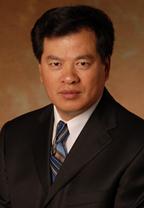


Biography: Dr. Yongan (Peter) Gu received his B.Eng. degree (Engineering Thermo-Physics) in 1982 and M.Eng. degree (Applied Fluid Mechanics) in 1985 both from Nanjing University of Science and Technology (China) and his Ph.D. degree (Thermo-Fluid Engineering) in 1999 from University of Alberta (Canada). Dr. Gu joined University of Regina (Canada) as an Assistant Professor in 1999 and became a full professor in 2006. His primary research areas are carbon dioxide-enhanced oil recovery (CO2-EOR) and chemical-EOR in light and medium oil formations, solvent-based, water-based and chemical-EOR in heavy oil reservoirs, carbon sequestration and storage (CSS) in depleted oil and gas reservoirs and saline aquifers.
Speech Title: Technical Exploration and Evaluation of Engineering Polymers as Direct Thickeners for CO2-Fracturing and CO2-Enhanced Oil Recovery
Abstract: It is well known that in the past many years, various engineering polymers have been used in the drilling muds for the well completion and in the chemical-enhanced oil recovery (EOR) process, such as alkali-surfactant-polymer (ASP) flooding. More recently, it is also found that engineering polymers can be used to viscosify/thicken CO2, which is an effective working fluid for waterless CO2-fracturing and an efficient extracting solvent for CO2-EOR.
In this study, a series of commercial polymers will be reviewed, evaluated, and compared as direct CO2 thickeners. Two commercial polymers, poly (vinyl ethyl ether) (PVEE) and poly (1-decene) (P-1-D), are tested and studied to thicken CO2 for CO2-EOR purpose. First, a series of laboratory tests are conducted to measure the cloud-point pressures of either polymer in supercritical CO2 or the equilibrium interfacial tensions (IFTs) of a light crude oil-pure/polymer-thickened CO2 system under different reservoir conditions. Second, a capillary viscometer is used to measure the viscosities of polymer-thickened CO2 at different test pressures. Third, a total of six high-pressure CO2 coreflood tests are performed to examine the effects of polymer-thickened CO2 on the total CO2-EOR. It is found that at the same and low polymer solubility in pure CO2, the measured cloud-point pressure of PVEE is much lower than that of P-1-D. The measured equilibrium IFT for polymer-thickened CO2 at a high pressure is much lower than that for pure CO2. The PVEE- or P-1-D-thickened CO2 viscosity is approximately 13 - 14 times higher than the pure CO2 viscosity. The CO2 coreflood test results show that PVEE- or P-1-D thickened CO2 flooding can further enhance oil recovery after a pure CO2-breakthrough (BT) occurs. CO2-BT can be significantly delayed if polymer-thickened CO2 is injected directly. Moreover, the mutual interactions between the light crude oil and either polymer-thickened CO2 are experimentally studied under different reservoir pressures.
In summary, more powerful and inexpensive commercial polymers need to be synthesized to significantly thicken CO2 for CO2-fracturing and CO2-EOR.
Keywords: Polymer thickeners for CO2; CO2-enhanced oil recovery (CO2-EOR); CO2-fracturing; Polymer-supercritical CO2 interactions; Polymer swelling; Polymer dissolution into CO2